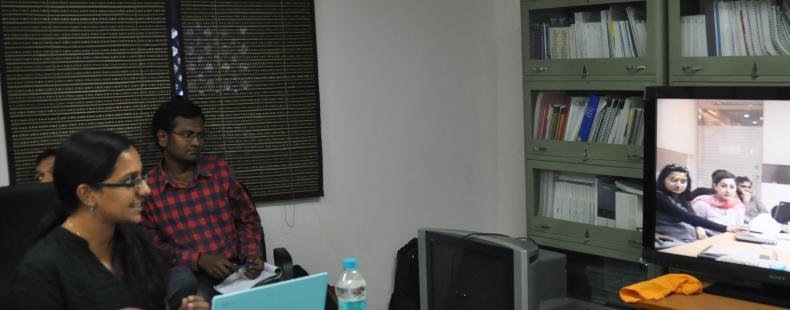Error message

THIS RESEARCH PROJECT IS CURRENTLY INACTIVE.
In much of South and Southeast Asia, rapid economic growth has created strong pressure to convert agricultural land to industrial, residential, or commercial use, including infrastructure development, tourism, and speculation. Much of this land-use change is occurring around Asia's cities, in areas that are described as "peri-urban."
It is estimated that Asia's peri-urban populations will increase by approximately 200 million over the next 25 years, accounting for 40 percent of urban population growth. Because most large manufacturing enterprises now locate in peri-urban areas, these regions will also continue to attract much, if not most, of the foreign direct investment flowing into the region, along with considerable domestic investment.
Peri-urban areas face unique problems, such as intense pressure on resources, expansion of slums, lack of adequate services such as water and sanitation, and degradation of adjacent farmland. Governance and management of peri-urban areas are often neglected by both rural and urban administrators. These areas may lie beyond urban administrative boundaries, or city administrators may simply lack the human and financial resources to upgrade infrastructure and develop appropriate plans and procedures.
The East-West Center conducted a two-year research project on peri-urban areas in India and Pakistan, with funding from the U.S. Department of State. In these two countries, peri-urban areas occupy large portions of the landscape, are home to tens of millions of people, and face serious environmental and human-health problems that are often neglected by both rural and urban administrations. The East-West Center's project involved collaborative study to collect and integrate socioeconomic and ecological data from censuses and surveys with information on land cover, water resources, and infrastructure from remotely sensed images and thematic maps. Data were analyzed to assess and compare environmental and human-health issues and related governance challenges in selected rural, urban, and peri-urban areas.
This project brought together experts, scholars, and promising young students and professionals from India and Pakistan. Lead institutions in the region were the South Asia Consortium for Interdisciplinary Water Resources Studies in Hyderabad, India, and the Sustainable Development Policy Institute in Islamabad, Pakistan.
Participants developed mutual interests and relationships based on a shared exploration of the challenges and impacts of rural-to-urban transitions and peri-urban interfaces in the South Asia region. Objectives were to:
- Establish a mutually agreed-upon program of research to promote substantive and extended dialogue between Indian and Pakistani participants
- Work collaboratively to integrate and analyze data showing rural, urban, and peri-urban characteristics of selected study areas
- Explore and contrast potential environmental, health, and governance issues among selected rural, urban, and peri-urban areas within each country and between the two countries
- Jointly disseminate project results within and between countries
Collaborating scholars
- Sumeet Saksena (Principal Investigator), Senior Fellow, East-West Center
- G. Shabbir Cheema (Co-Principal Investigator), Senior Fellow, East-West Center
- Jefferson Fox (Co-Principal Investigator), Senior Fellow, East-West Center
- Anjal Prakash, South Asia Consortium for Interdisciplinary Water Resources Studies, Hyderabad, India
- Abid Suleri, Sustainable Development Policy Institute, Islamabad, Pakistan

THIS RESEARCH PROJECT IS CURRENTLY INACTIVE.
In much of South and Southeast Asia, rapid economic growth has created strong pressure to convert agricultural land to industrial, residential, or commercial use, including infrastructure development, tourism, and speculation. Much of this land-use change is occurring around Asia's cities, in areas that are described as "peri-urban."
It is estimated that Asia's peri-urban populations will increase by approximately 200 million over the next 25 years, accounting for 40 percent of urban population growth. Because most large manufacturing enterprises now locate in peri-urban areas, these regions will also continue to attract much, if not most, of the foreign direct investment flowing into the region, along with considerable domestic investment.
Peri-urban areas face unique problems, such as intense pressure on resources, expansion of slums, lack of adequate services such as water and sanitation, and degradation of adjacent farmland. Governance and management of peri-urban areas are often neglected by both rural and urban administrators. These areas may lie beyond urban administrative boundaries, or city administrators may simply lack the human and financial resources to upgrade infrastructure and develop appropriate plans and procedures.
The East-West Center conducted a two-year research project on peri-urban areas in India and Pakistan, with funding from the U.S. Department of State. In these two countries, peri-urban areas occupy large portions of the landscape, are home to tens of millions of people, and face serious environmental and human-health problems that are often neglected by both rural and urban administrations. The East-West Center's project involved collaborative study to collect and integrate socioeconomic and ecological data from censuses and surveys with information on land cover, water resources, and infrastructure from remotely sensed images and thematic maps. Data were analyzed to assess and compare environmental and human-health issues and related governance challenges in selected rural, urban, and peri-urban areas.
This project brought together experts, scholars, and promising young students and professionals from India and Pakistan. Lead institutions in the region were the South Asia Consortium for Interdisciplinary Water Resources Studies in Hyderabad, India, and the Sustainable Development Policy Institute in Islamabad, Pakistan.
Participants developed mutual interests and relationships based on a shared exploration of the challenges and impacts of rural-to-urban transitions and peri-urban interfaces in the South Asia region. Objectives were to:
- Establish a mutually agreed-upon program of research to promote substantive and extended dialogue between Indian and Pakistani participants
- Work collaboratively to integrate and analyze data showing rural, urban, and peri-urban characteristics of selected study areas
- Explore and contrast potential environmental, health, and governance issues among selected rural, urban, and peri-urban areas within each country and between the two countries
- Jointly disseminate project results within and between countries
Collaborating scholars
- Sumeet Saksena (Principal Investigator), Senior Fellow, East-West Center
- G. Shabbir Cheema (Co-Principal Investigator), Senior Fellow, East-West Center
- Jefferson Fox (Co-Principal Investigator), Senior Fellow, East-West Center
- Anjal Prakash, South Asia Consortium for Interdisciplinary Water Resources Studies, Hyderabad, India
- Abid Suleri, Sustainable Development Policy Institute, Islamabad, Pakistan

